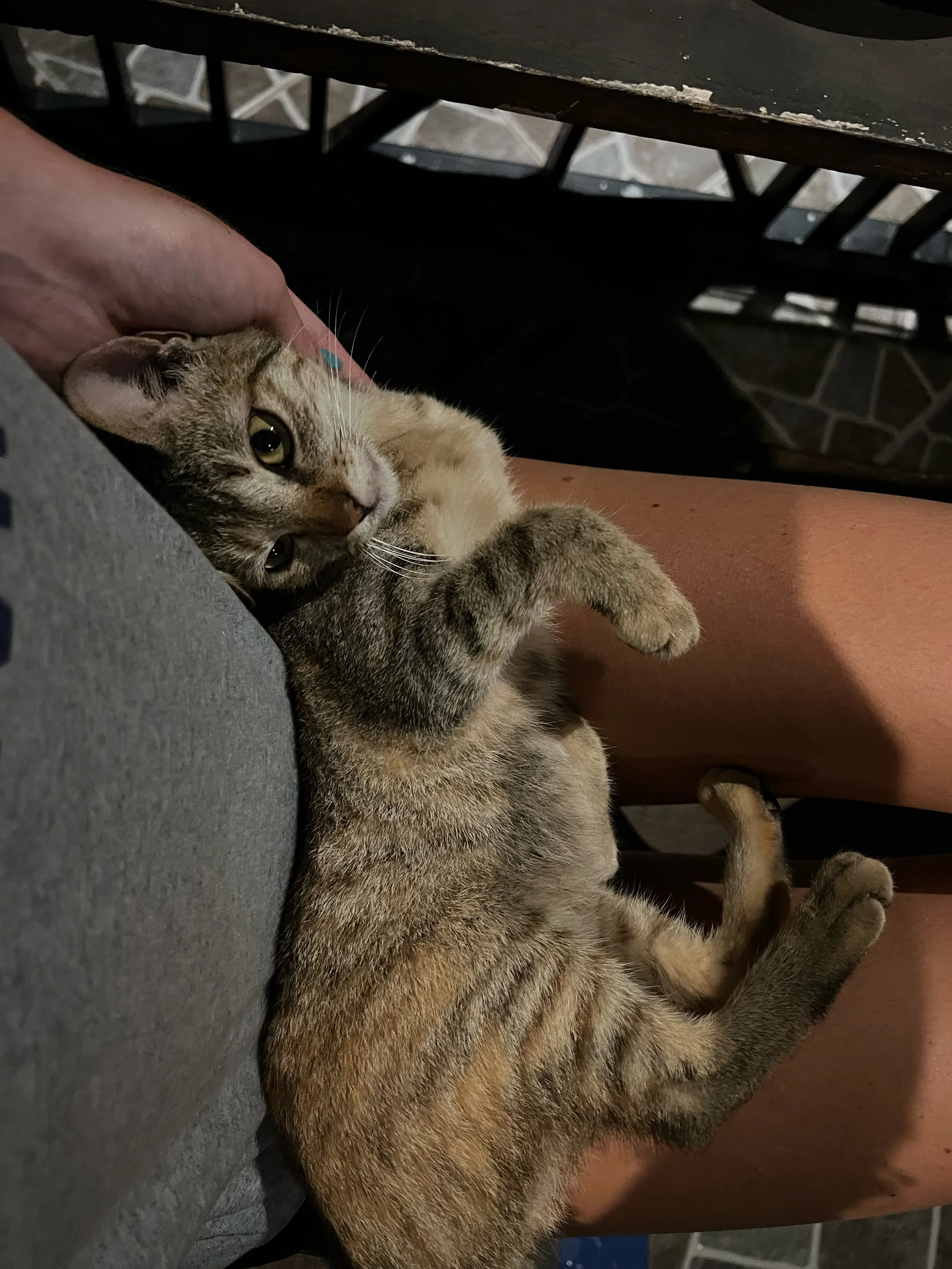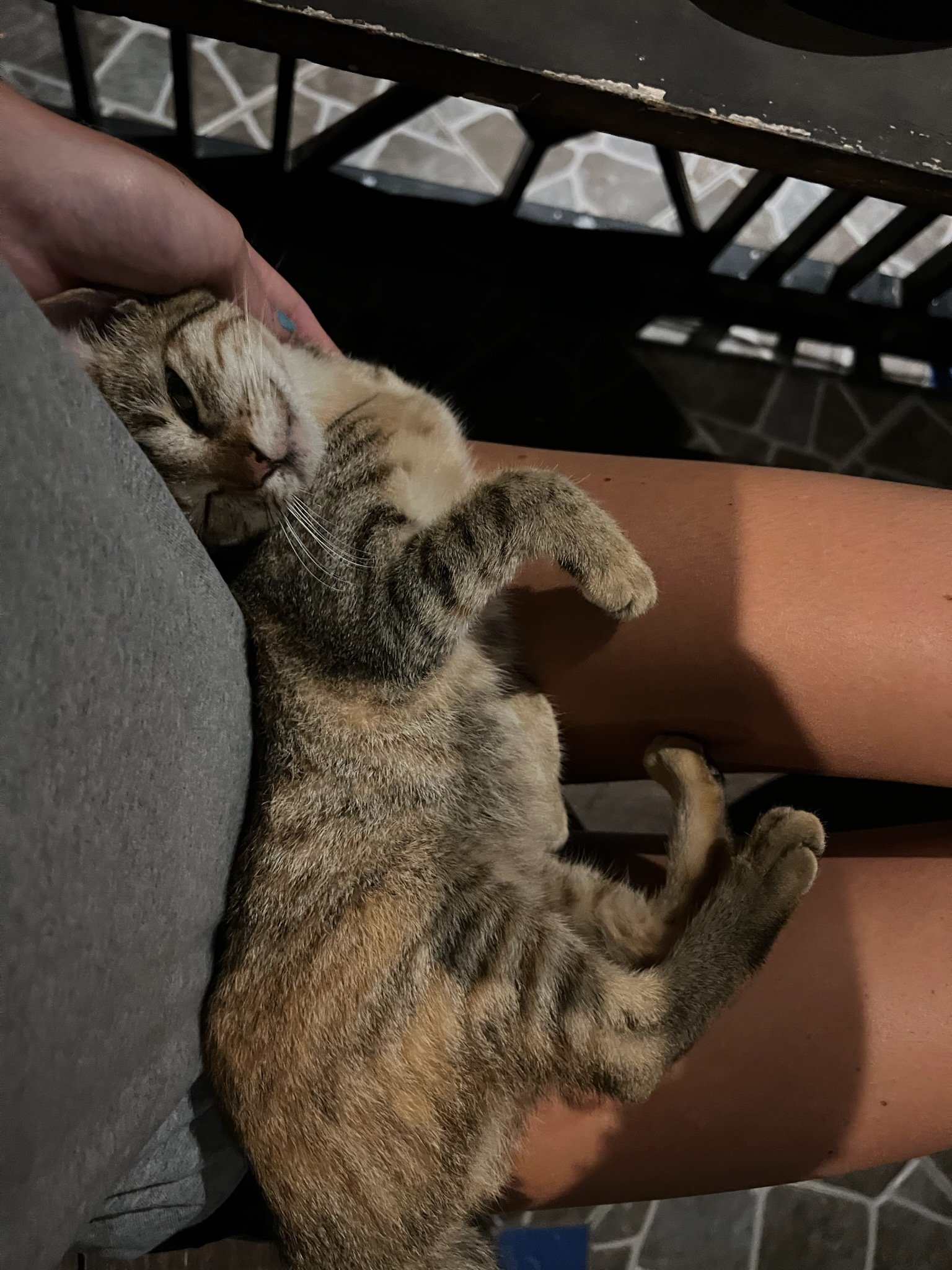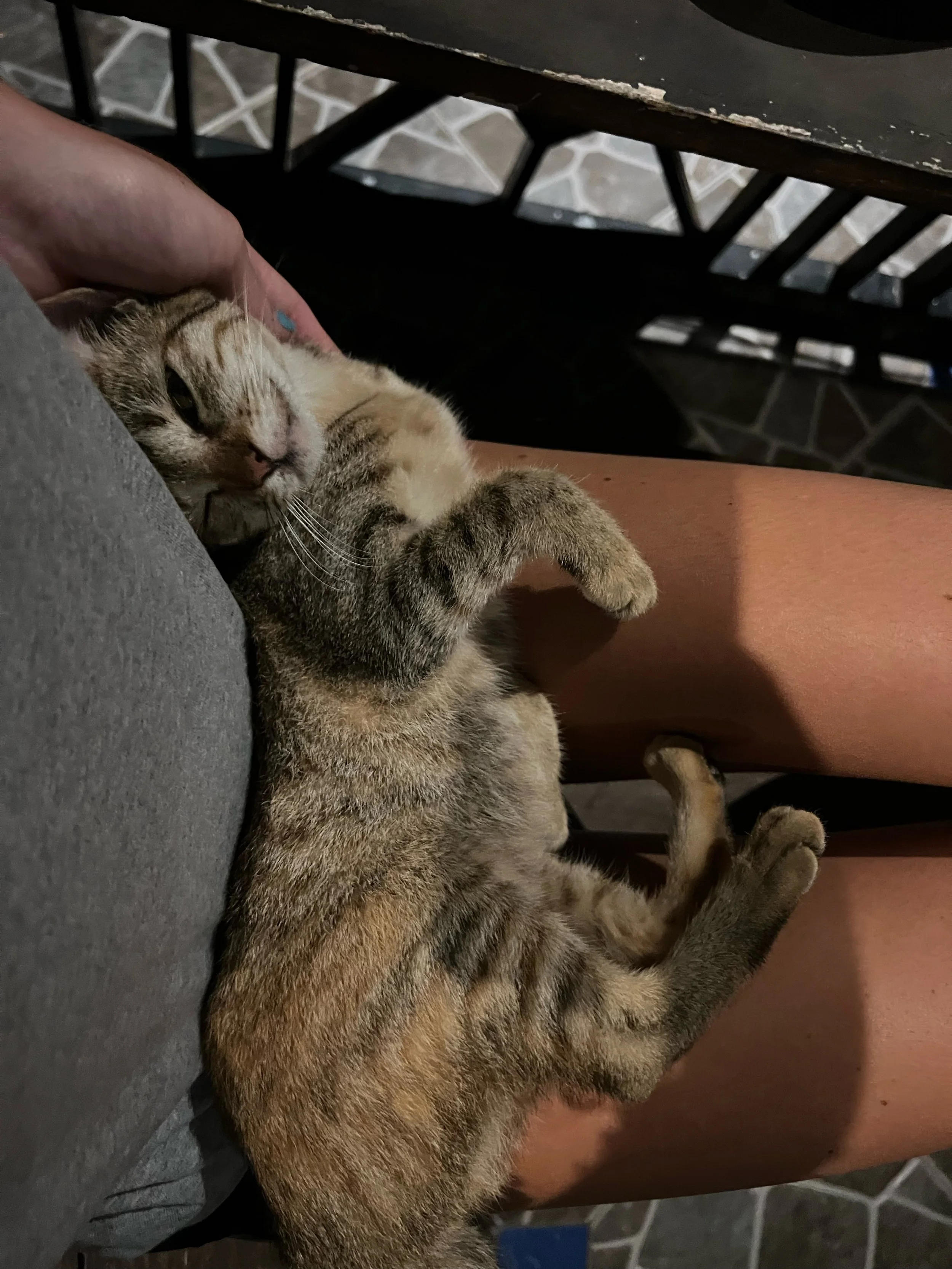Ubud Cat…
Until A Dog Scared Her Away…
Ubud is the cultural and spiritual heart of Bali, Indonesia, nestled in lush highlands about 1.5 hours north of Denpasar Airport. Unlike Bali’s beach resorts, Ubud offers a slower, more introspective pace, attracting travelers who seek connection with nature, art, and inner peace. Surrounded by dense jungle, steep river valleys, and terraced rice fields, it’s a breathtaking base for exploring central Bali’s serene beauty. Scenic spots like Tegallalang and the Campuhan Ridge Walk are ideal for hiking, photography, and quiet reflection.
Ubud is also Bali’s artistic soul. It’s filled with galleries, craft markets, and cultural institutions like the Agung Rai Museum of Art and Neka Art Museum. The streets buzz with creativity, from traditional Balinese dance performances to artisan villages nearby specializing in silverwork, wood carving, and batik. Wellness is woven into the town’s rhythm—Ubud is a global hotspot for yoga, meditation, and holistic healing. Retreat centers like The Yoga Barn and Radiantly Alive offer classes and workshops year-round, while countless spas provide Balinese massages, Ayurvedic treatments, and herbal therapies.
Spiritual seekers will find plenty to explore. Sacred sites like Goa Gajah (Elephant Cave), Tirta Empul (famous for its holy spring purification ritual), and Gunung Kawi (a 1,000-year-old temple carved into rock cliffs) reflect Ubud’s deep religious heritage. At the heart of town lies the Pura Taman Saraswati water temple, elegantly adorned with lotus ponds and carvings.
The Ubud Art Market is a must-visit for handmade textiles, carvings, and locally crafted jewelry, while boutique-lined streets like Jalan Hanoman and Monkey Forest Road showcase eco-conscious fashion and home goods. The food scene is diverse and inspiring, ranging from traditional Indonesian warungs to high-end dining. Locavore is one of the island’s most celebrated restaurants, offering modern Indonesian tasting menus, while cafés like Sayuri, Alchemy, and Zest serve vibrant plant-based dishes and smoothies.
Ubud also offers natural encounters, including the Sacred Monkey Forest Sanctuary—home to hundreds of macaques—and nearby waterfalls like Tegenungan, Kanto Lampo, and Uma Anyar. Getting around is easy by scooter, walking, or hiring a private driver, though traffic can get congested in town. Ride-sharing apps like Grab and Gojek are available in most areas, with some local restrictions.
The best time to visit Ubud is during the dry season from April to October, when skies are clearer and conditions are ideal for outdoor activities. The rainy season, from November to March, brings fewer crowds and a lush green landscape, though daily showers are common. Morning visits to popular sites are best to avoid heat and crowds.
In essence, Ubud is a place of reflection, creativity, and quiet adventure. Whether you’re walking through misty rice terraces, taking a yoga class at sunrise, exploring ancient temples, or enjoying a fresh coconut at a local café, Ubud invites you to slow down and reconnect—with nature, with culture, and with yourself.




